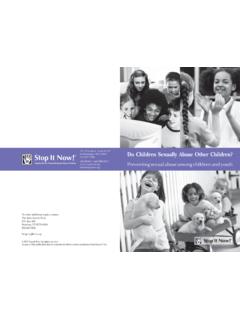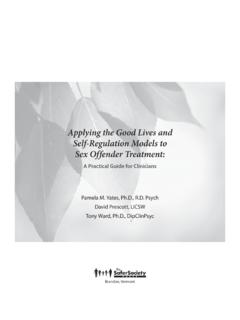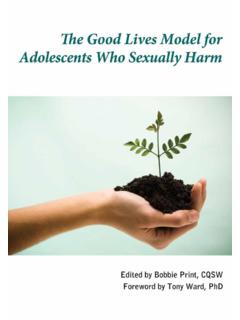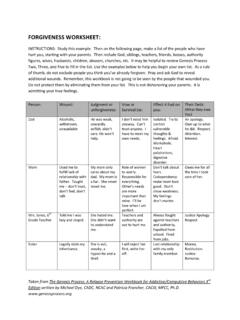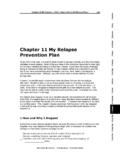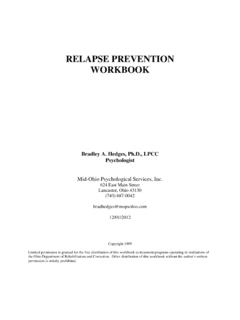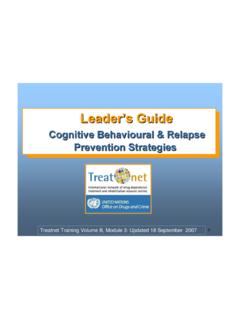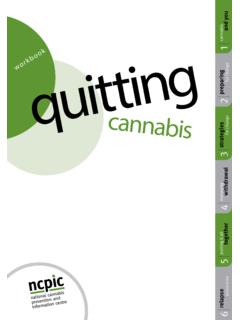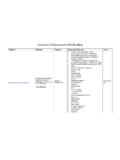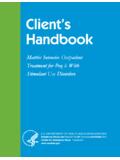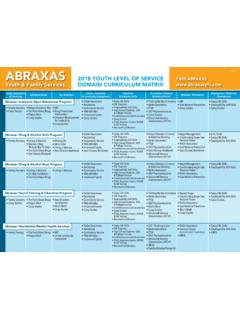Transcription of Pathways - Safer Society
1 PathwaysA Guided workbook for Youth Beginning TreatmentFourth Edition Timothy J. KahnBrandon, VermontContents The Prevention and Safety Path Progress Chart ..ii Preface ..ix Introduction ..xvii 1. Initial Reactions ..3 2. Starting the Treatment Process ..31 3. Disclosing: How Do I Explain What I ve Done? ..57 4. Learning about Victims ..87 5. Why Did I Do It? Understanding My Own Sexual Acting Out ..111 6. Identifying My Grooming and Maintenance Behaviors ..125 7. Understanding the Chain of Events That Led to My Sexual Behavior Problems.
2 139 8. Controlling and Expressing My Sexual Feelings in Positive Ways ..167 9. Creating and Following My Relapse Prevention Plan ..191 10. Understanding Sexual Abuse and Other Traumatic Life Experiences ..213 11. Clarification: Making Things Clear and Apologizing for My Behavior ..227 12. Steps to Personal Accountability: Becoming a Responsible, Sensitive, and Honest Person Who Has Integrity ..261 13. Completing Treatment by Living a Responsible and Healthy Lifestyle ..327 14. Completing My STOP Plan.
3 335 Conclusion: The Path to Responsible Living Continues ..365 Appendix: Important Information for Counselors ..367 About the Author ..369 Preface ix PrefaceThank you for choosing Pathways . The first three editions of the Pathways workbook have been widely used for the past 20 years in many parts of the world. This workbook is designed primar-ily for adolescents between the ages of 12 and 18 who have sexual behavior problems. Some older clients and some younger clients have also bene-fited from the Pathways workbook .
4 If Pathways is used with clients with low reading ability, it may be necessary to read the workbook to or with the client. Clients in outpatient as well as resi-dential treatment programs have benefited from the Pathways workbook in the past. This fourth edition is designed for both groups of the Pathways workbook has evolved over the past 20 years, divergent theoretical models and treatment rationales have come and gone. Researchers and treatment professionals now have a very clear understanding that children and adolescents with sexual behavior problems are quite different than adult sex offenders, and as a result, the two populations require very different treatment approaches.
5 While the relapse preven-tion model and cognitive behavioral treatments were widely used for many years, there is now a new push to find evidence-based models that meet the many distinct needs of adolescents with sexual behavior problems. Pathways fourth edition utilizes a cognitive behavioral framework, with an emphasis on helping clients to build on existing strengths and to develop healthy lifestyles. Many clinicians around the world currently support and have adopted what is called the Good Lives Mo del, from The Juvenile Sex Offender, 2nd ed.
6 , by Howard Barbaree and William Marshall (New York, , Guilford Press, 2006). The Good Lives Model is a treatment approach that is based on the idea that successful treatment for persons with sexual behavior problems requires that they not only learn adaptive skills but also develop healthy lifestyles in order to prevent re-offense. The Good Lives Model suggests that material well-being, health, productivity, intimacy, safety, community, and emotional well-being are all crit-ical components in helping clients develop good live s.
7 Pathways fourth edition is focused on strength-based methods that help clients develop healthy and productive lifestyles consistent with the Good Lives Model of rehabilitation. Pathways fourth edition incorporates a new Healthy Living Project, which is a type of culminating assignment that clients work on throughout their involve-ment in their treatment programs. In addition, Pathways continues to utilize a restorative justice theme throughout the workbook that empha-sizes concern for development of victim empathy, restitution, and development of personal respon-sibility.
8 This fourth edition allows clinicians to incorporate other theoretical approaches as well. I would like to emphasize that professional treatment providers are at their best when they employ a warm, empathetic, rewarding, and guid-ing/directive style. This edition of Pathways has been developed with that idea in mind. I would also like to emphasize that the no-one-size-fits-all approach is effective with adolescents with sexual behavior problems. Current research continues to show that adolescents with sexual behavior problems are a very diverse group, and represent the entire spectrum of the adolescent population.
9 In my experience, most adolescents do best with a supportive and gentle therapeutic approach by a firm and directive therapist, and relatively few adolescents require the harsh level of confronta-tion and almost punitive approaches that have sometimes been utilized with adult and adoles-cent sexual offenders. Pathways is not a treatment program in and of itself. Pathways is a tool that is designed to serve as one component of an overall treatment program x Pathwaysfor adolescents with sexual behavior prob-lems.
10 The stories and exercises in Pathways are designed to complement individual, group, and family therapy. Most therapists ask their clients to complete the work in Pathways in the order in which the material is presented. The exercises in this workbook are structured in a manner that has worked well for many clients in the past. In some cases, however, a therapist might decide to change the order of the client s work in order to meet a specific, individual need. For example, a client who has engaged in sexual behavior with a sibling may benefit from skipping ahead to chap-ter 11 and working on the clarification process, if the sibling s therapist has requested some early contact between the client and the sibling.
